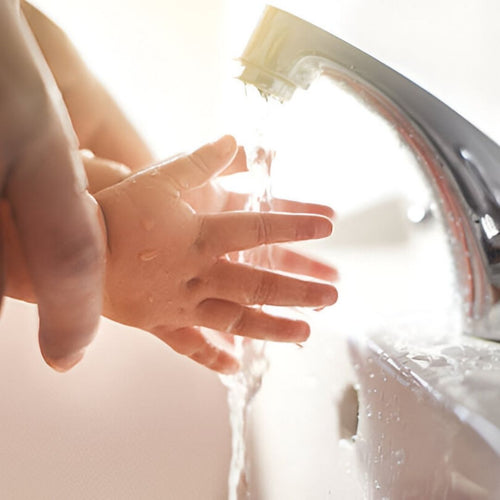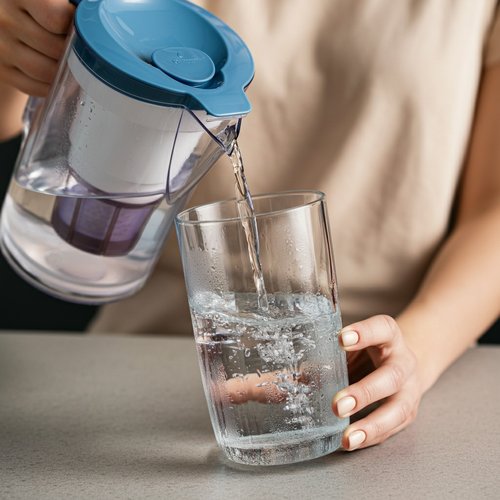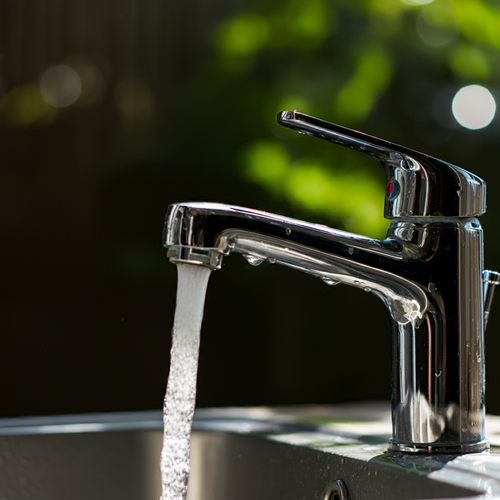Getting to Know Iron Filters
If you're one of the folks relying on well water, iron filter systems might just be your new best friend. Dealing with high iron levels can be a real drag, turning your sparkling water into rusty dismay and wreaking havoc on your pipes.
So, let’s chat about how these filters do their magic and why you ought to consider getting one.
The Lowdown on How Iron Filters Work

Iron filters aren't too different from water softeners in how they operate. They throw in a little oxidizing agent—think of it like a magic potion—that flips iron from an invisible form into chunky bits that the filter can catch. Here’s the skinny on the steps involved:
- Oxidation: First up, the filter adds something like air or chlorine to the mix, turning soluble iron into its clunky, insoluble sibling.
- Filtration: Those chunky bits, now called ferric iron, get snagged by the filter media.
- Backwashing: To keep humming along, the system occasionally gives itself a cleanup, rinsing out the trapped iron bits.
Designed specifically for tackling iron, these filters are a solid choice for well water with iron woes. If you're going for the gold, pair them with water softeners to cover more bases in water quality.
Why Bother with Iron Filters?

What’s in it for you if you hop on the iron filter bandwagon? Plenty!
- Better Water Quality: With iron filters, you’ll enjoy see-through water—none of that rusty nonsense.
- Improved Taste and Smell: Get rid of that pesky metal tang or gross eggy smell.
- Safeguard Your Plumbing: Kiss goodbye to rust stains and keep your faucets, sinks, and appliances in tip-top shape.
- Less Cleaning Hassle: With iron out of the picture, you'll spend less time scrubbing away at stained fixtures.
| Perks of Iron Filters | What It Means for You |
|---|---|
| Better Water Quality | Get clear water, free from iron |
| Improved Taste and Smell | No more metallic or sulfury odors |
| Protect Your Plumbing | Avoid rust stains and wear |
| Less Maintenance | Fewer cleaning headaches |
With all these perks, you can't go wrong with adding an iron filter to your home, especially if you’re pulling from a well.
Impact of High Iron Levels
Effects on Water Quality
Let's talk about something every homeowner would rather not deal with—high iron levels in your well water. Trust us, it's not just about making your water look like it belongs in a rust factory, it's about how your water actually ends up tasting and smelling.
| Iron Amount (mg/L) | What Happens |
|---|---|
| 0.3 | Water turns reddish-brown |
| 1.0 | That awkward metallic taste kicks in |
| 10.0 | Prepare for stains and unwanted smells |
Even with just 0.3 mg/L iron, you could be pouring some reddish-brown science project into your glass. Who wants to drink something that looks like it should belong in a mechanic’s toolbox?
The experience doesn't stop there. With iron levels at 1.0 mg/L, your water might taste like you decided to sample pennies. Add in some unwanted sulfur-like smells from iron-loving bacteria, and suddenly, sticking with bottled water seems more appealing.
Iron isn’t just an eyesore or nose-cringer—it’s bacteria heaven too. Iron bacteria, which thrive on the rusty stuff, leave behind slimy residues that can clog up your plumbing, turning "turn on the faucet" into a suspenseful mystery of what’s going to come out.
Effects on Plumbing and Fixtures
Iron's not just causing your water to misbehave—it’s waging war on your plumbing and home fixtures too. Those low concentrations of 0.3 mg/L can be absolutely annoying, leaving trails of reddish-brown stains.
| Iron Amount (mg/L) | Staining Adventures |
|---|---|
| 0.3 | Reddish-brown stains find homes in sinks and tubs |
| 1.0 | Say hello to yellowish marks in your toilet |
| 10.0 | Battle the clogging and slime brigade |
Your bathroom fixtures might start looking like abstract art with all the remnant marks left by iron-heavy water. They're like the tattoos you didn't ask for and can be tough to scrub out, leaving guests wondering when was the last time you cleaned.
Iron in pipes isn't just a cosmetic problem; it's a slowing, clogging menace. It can turn water flow into a dribble, posing risks not just to your patience but to your plumbing setup. And if you're fending off iron bacteria's slime party, it's a bigger mess.
And, think about doing your laundry. Iron's notorious for doling out wardrobe mischief, dying your clothes with red or brown spots that might not come out, nudging you closer to another shopping spree.
If you're haunted by these iron woes, an iron filter system isn't just a fancy add-on—it's your water’s superhero. They tackle iron in your well water so your plumbing has a fighting chance to stay iron-free. This ensures that across the house, you're getting clean, fresh water and less wear-and-tear.
So, wave goodbye to spa water and rusty pipes and say hello to a reliable mix of clear, iron-free H2O. Consider the iron filter your house’s secret weapon in keeping things clean and running smoothly.
Choosing the Right Iron Filter

Picking the right iron filter for your well water feels like finding a needle in a haystack. There's just so much out there! But don't worry, here's the skinny on what to consider so your water at home is fresh and clear.
Factors to Consider
Before you dive in, keep these things in mind when you're eyeballing an iron filter:
-
Iron Levels: Check out how much iron is chillin' in your well water. Some filters pack a bigger punch against high iron levels. A cool cat like the SoftPro Iron Master AIO can knock out up to 30 ppm of iron, which is pretty hardcore.
-
Sneaky Contaminants: It's not just iron you're battling—there’s also manganese and that stanky hydrogen sulfide.
-
Water Usage: Think about how much H2O your family guzzles down every day. It might steer you toward a bigger or different type of filter.
-
Maintenance Hassles: Some systems demand a bit of TLC on the regular, with maintenance and part swaps.
-
Dollars and Cents: Iron filters ain't free. Weigh the upfront price, ongoing upkeep, and those sneaky extra costs for parts or the pros.
Maintenance and Longevity

Keeping our iron filter systems in tip-top shape isn’t just smart—it makes sure we have clean water that’s free-flowing and fresh-tasting. Let’s break it down and make the most of it.
Regular Maintenance
For our filters to do their thing without a hiccup, they need some love and care every now and then. Depending on what setup we’re using, the demands can differ a bit.
- SoftPro Iron Master AIO Water Filtration System: Keep an eye on those iron, manganese, and hydrogen sulfide levels to make sure everything runs smoothly.
For setups needing a bit more elbow grease:
- Reverse Osmosis (RO) Systems: Swap out the sediment pre-filter, pre-carbon filter, and post-carbon filter two or three times a year. The RO membrane has a longer life, usually needing a change every couple of years.
- UV Disinfection Systems: Change that UV lamp once a year to keep fighting off those unwanted bugs effectively.
A yearly check-up by the pros for whole-house setups can avoid nasty surprises. They’ll make sure everything, especially parts like UV sterilizers, are doing their job right.
Lifespan of Iron Filter Media
Knowing when to swap out the guts of our systems keeps our water top-notch.
| System Type | Lifespan | Notes |
|---|---|---|
| SoftPro Water Systems | 15-20 years | Low upkeep, auto backwash takes out the hassle |
| Reverse Osmosis Membrane | 24 months | Change pre and post filters twice a year. |
| UV Lamp | 12 months | Yearly change is key for keeping it effective. |
By sticking to these schedules, we ensure our systems keep pumping clear, tasty water our way for many moons. That means peace of mind and one less thing to worry about at home.


















![Aldex Premium 10% Cross Link Resin for Water Softener [High Capacity]-SoftPro® Water Systems](http://www.softprowatersystems.com/cdn/shop/files/Aldex_10_Cross_Link_Resin_Premium_High_Capacity_for_Water_Softener_600x.jpg?v=1735853599)





















